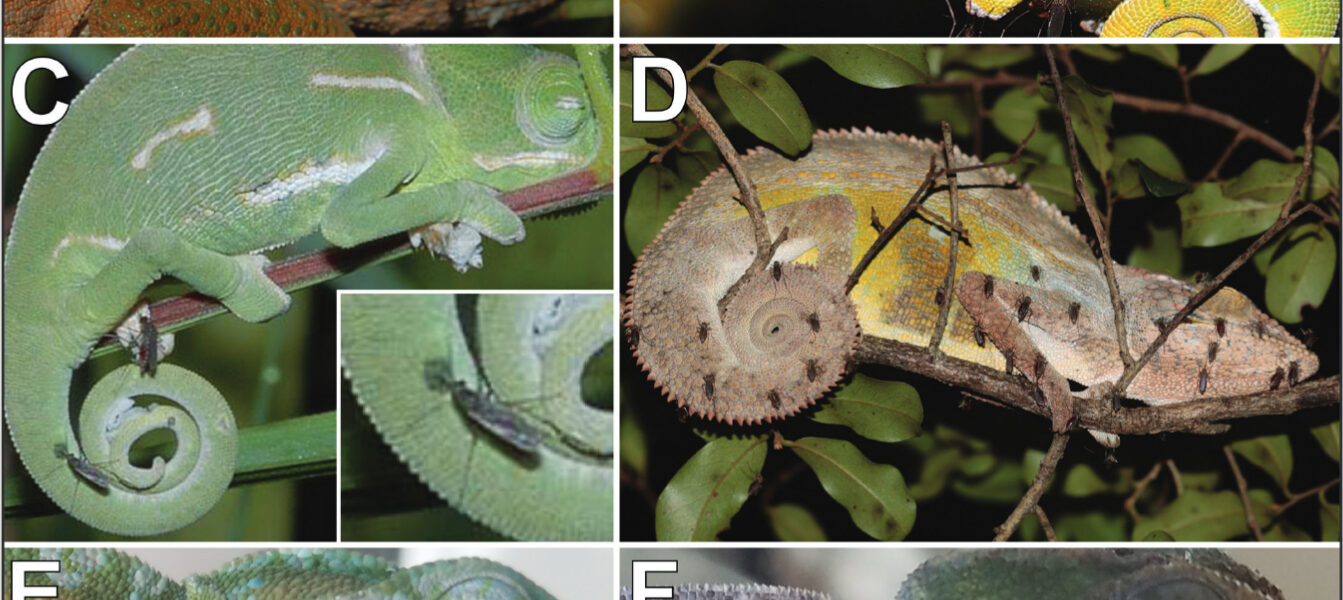Mosquito bites may induce skin colour change
Sometimes science starts small: last year, someone posted a photo of a Calumma globifer with a mosquito sitting on it on the online platform iNaturalist. Right there you could see a black discoloration of the scales. I wonder if there was a connection?
A handful of curious people searched for more photos of mosquitoes on chameleons and found what they were looking for: On Facebook there were some of Veiled chameleons, on iNaturalist more of Furcifer minor and Furcifer nicosiai. However, there were also six observations of mosquitoes on chameleons that did not appear to have black spots.
To test the connection, scientists in Madagascar placed two Furcifer oustaleti and four carpet chameleons alone in an enclosure with 25 female Asian tiger mosquitoes (Aedes albopictus), which had not been fed for 24 hours beforehand. At the same time, all six chameleons were pricked in the skin with a needle to test whether this “trauma” would also trigger a color change in the skin. The results were surprising: in the four Furcifer lateralis, numerous black skin discolorations developed after mosquito bites, in the two Furcifer outaleti not a single one. The punctures with the needle remained without consequences in all six.
The authors of the recently published article propose three possible theories as to how the color change in the chameleon’s skin could come about: The mosquito saliva could contain a type of local anesthetic, nitric oxide or other proteins that cause the skin’s melanophores to become exclusively visible. Further research in this field would certainly be exciting!
Mosqito bite-induced color change in chameleon skin
Pablo Garcia, Raul E. Diaz Junior, Christopher V. Anderson, Tovo M. Andrianjafy, Len de Beer, Devin A. Edmonds, Ryan M. Carney
Herpetological Review 54(3), 2023, pp.353-358



One comment
Comments are closed.